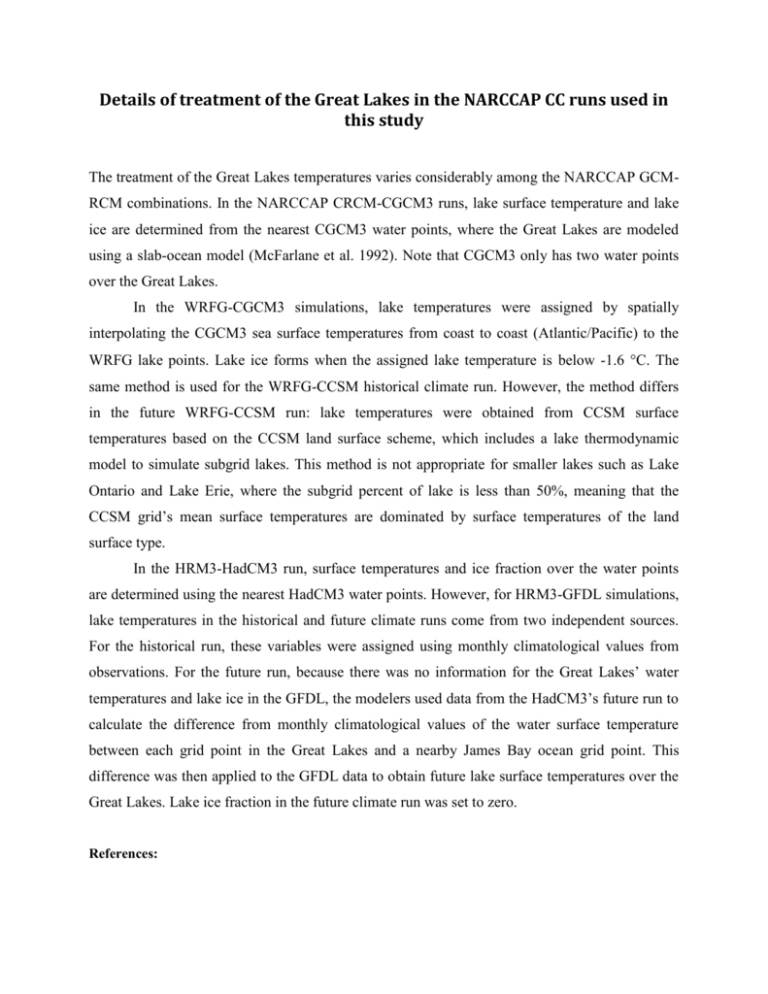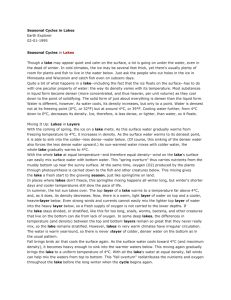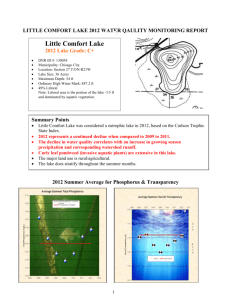Details of treatment of the Great Lakes in the NARCCAP CC runs
advertisement

Details of treatment of the Great Lakes in the NARCCAP CC runs used in this study The treatment of the Great Lakes temperatures varies considerably among the NARCCAP GCMRCM combinations. In the NARCCAP CRCM-CGCM3 runs, lake surface temperature and lake ice are determined from the nearest CGCM3 water points, where the Great Lakes are modeled using a slab-ocean model (McFarlane et al. 1992). Note that CGCM3 only has two water points over the Great Lakes. In the WRFG-CGCM3 simulations, lake temperatures were assigned by spatially interpolating the CGCM3 sea surface temperatures from coast to coast (Atlantic/Pacific) to the WRFG lake points. Lake ice forms when the assigned lake temperature is below -1.6 C. The same method is used for the WRFG-CCSM historical climate run. However, the method differs in the future WRFG-CCSM run: lake temperatures were obtained from CCSM surface temperatures based on the CCSM land surface scheme, which includes a lake thermodynamic model to simulate subgrid lakes. This method is not appropriate for smaller lakes such as Lake Ontario and Lake Erie, where the subgrid percent of lake is less than 50%, meaning that the CCSM grid’s mean surface temperatures are dominated by surface temperatures of the land surface type. In the HRM3-HadCM3 run, surface temperatures and ice fraction over the water points are determined using the nearest HadCM3 water points. However, for HRM3-GFDL simulations, lake temperatures in the historical and future climate runs come from two independent sources. For the historical run, these variables were assigned using monthly climatological values from observations. For the future run, because there was no information for the Great Lakes’ water temperatures and lake ice in the GFDL, the modelers used data from the HadCM3’s future run to calculate the difference from monthly climatological values of the water surface temperature between each grid point in the Great Lakes and a nearby James Bay ocean grid point. This difference was then applied to the GFDL data to obtain future lake surface temperatures over the Great Lakes. Lake ice fraction in the future climate run was set to zero. References: Goyette S., McFarlane NA, and Flato G (2000): Application of the Canadian Regional Climate Model to the Laurentian Great Lakes Regions. Implementation of a Lake Model. Atmos Oc, 38, 481-503. McFarlane, NA, Boer GJ, Blanchet J-P, Lazare M (1992): The Canadian Climate Centre secondgeneration general circulation model and its equilibrium climate. J Climate, 5, 1013-1044. https://www.narccap.ucar.edu/about/caveats.html









